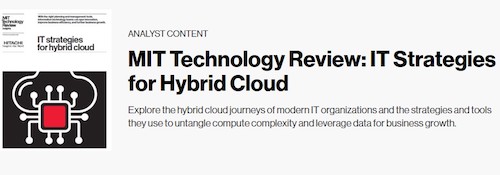In the rapidly evolving landscape of cloud management, the migration of applications to the cloud has become a defining challenge for solution providers and organizations alike. The sudden shift to accommodate remote workforces and the surge in online activities have left companies straddling between the cloud and on-premises worlds. In this dynamic scenario, the adoption of a hybrid cloud IT infrastructure has emerged as a beacon of innovation, efficiency, and market agility.
According to a recent ESG survey of 372 IT professionals, more than a third of companies (37%) prioritize investing in hybrid cloud over the next year and a half. However, the promises of hybrid cloud come with their own set of complexities. Managing a hybrid environment requires careful consideration of compatibility issues with legacy equipment, cybersecurity concerns, and the costs associated with data migration and access management.
To successfully navigate these challenges and unlock the true potential of hybrid cloud, organizations need a well-crafted hybrid cloud management plan. This includes the implementation of tailored tools and strategies that suit the diverse needs of businesses across industries.
Key guidelines, such as the necessity for a central control plane, leveraging automation for IT operations management, and transitioning from infrastructure management to service-level agreement management with vendors, form the foundation of an effective plan.
Get Real: The Cloud Journey
Russell Skingsley, Chief Technology Officer for Digital Infrastructure at Hitachi Vantara, emphasizes the importance of realistic expectations in the cloud journey. While the initial belief was that all applications would eventually move to the cloud, the reality is more nuanced. Certain applications are suitable for migration, some require adaptation, and others are best kept on-premises. This complexity is further highlighted by organizations shifting applications back to the data center due to factors such as data sensitivity, performance, and availability requirements.
To guide organizations through this intricate process, experts at Hitachi Vantara and MIT Technology Review developed an Insights Report, IT Strategies for Hybrid Cloud. The Report emphasizes the need for a systematic methodology. Similar to a factory-style assembly line, each application in the portfolio undergoes analysis to determine whether it should be "lifted and shifted" to the cloud as-is, refactored or rewritten to harness the full potential of the cloud, or retained on-premises.
Learn how to strategically move applications, optimize resources, and overcome challenges with hybrid cloud.
Download the MIT Technology Review Insights Report.


